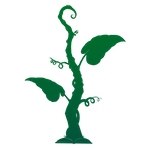Ecosystems #1: Non-Fiction Texts, Part 1
Lesson Overview: In the next two lessons, students work on understanding non-fiction texts. Book design is non-standard. That means that our students must navigate various forms, layouts, and designs to find and use information. In these lessons, students learn the elements or components of non-fiction texts in the hopes that… Read more
Ecosystems #2: Non-Fiction Texts, Part 2
Lesson Overview: In this lesson, student complete work on understanding non-fiction texts. Last week students worked on textual elements of non-fiction books. Today they will work on non-textual elements in non-fiction books. If they know how information books are “built,” they will be more likely to work confidently and use… Read more
Ecosystems #3: Five Facts and a Story
Lesson Overview: In this lesson, students gather five facts from a nonfiction text. Then, they use one or more of those facts to write an original story in comic book format. It’s a sure winner because kids love to make comics! The lovely Corinna Mansfield, currently at Renaissance College in… Read more
Ecosystems #4: Print vs Digital Information Sources
Lesson Overview: In this lesson, students compare print and digital information sources. Most of the students are familiar with both print books and digital devices, but the comparison is a good exercise. It asks them to think critically and objectively about what each kind of source can do for them,… Read more

 Ecosystems: Unit Overview
Ecosystems: Unit Overview